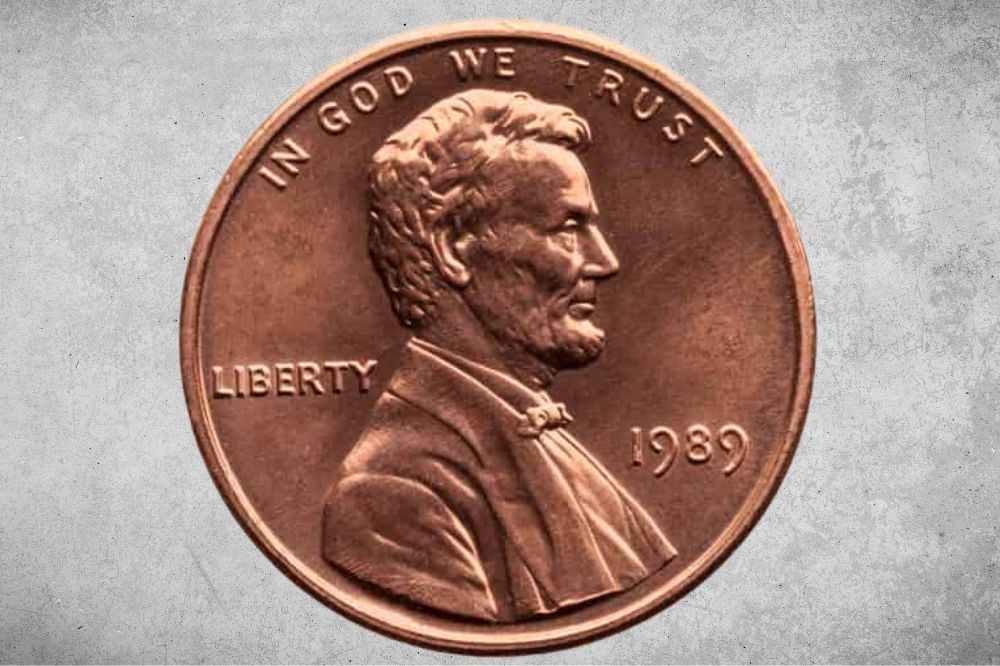The 1989 penny was produced en masse in Philadelphia, Denver, and San Francisco. Although common, some styles/errors have made them quite valuable. In fact, you may get as much as $7,500 from this coin!
If you have a 1989 penny that you think will make you rich, you need to familiarize yourself with its value.
You can find this information – and more – below.
1989 Penny Details
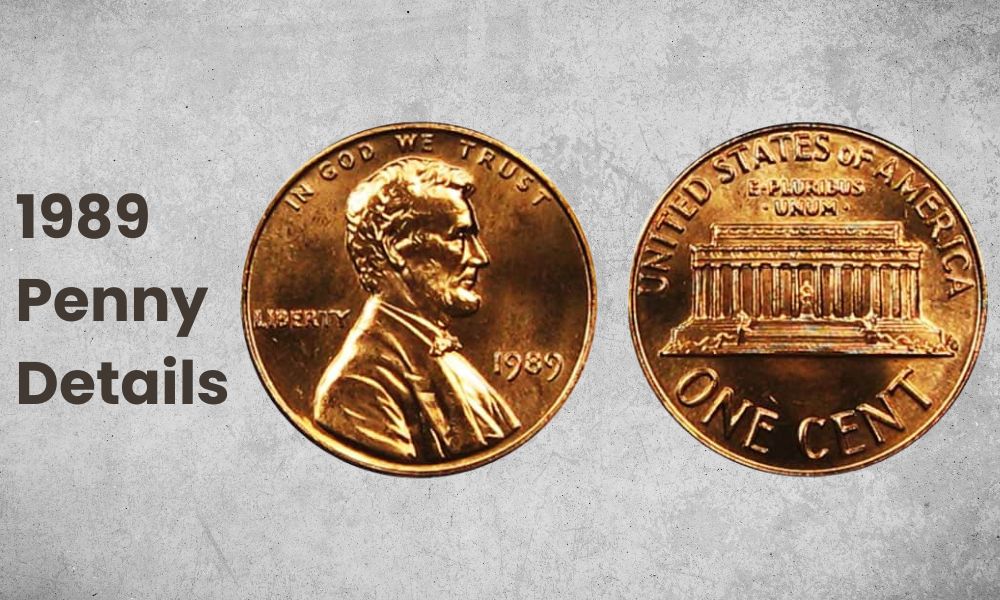
- Category: Lincoln cent/penny
- Denomination: 1 cent/$0.01
- Mintage: 7,261,535,000
- Minted at: Philadelphia
- Mint mark: No mint mark
- Strike type: Business
- Obverse Designer: Victor D. Brenner
- Reverse Designer: Frank Gasparro
- Metal Composition: 5% Zinc with 2.5% Copper after 1982
- Diameter: 19 mm
- Mass / Weight: 5 grams
- Edge: Plain/smooth
- Coinage years:1959-2008
Also Read: Top 20 Most Valuable Old Pennies Worth Money (Penny Collection)
1989 Penny Value Chart
| Mint Mark | Good | Fine | Extremely Fine | Uncirculated | Proof |
| 1989 No Mint Mark Penny | $0.01 | $0.01 | $0.02 | $0.34 | n/a |
| 1989 D Penny | $0.01 | $0.01 | $0.02 | $0.34 | n/a |
| 1989 S Penny | n/a | n/a | n/a | n/a | $10 |
1989 Penny Value and Varieties Guides
Let’s go through the three types of 1989 pennies produced in Philadelphia, Denver, and San Francisco:
1989 No Mint Mark Penny
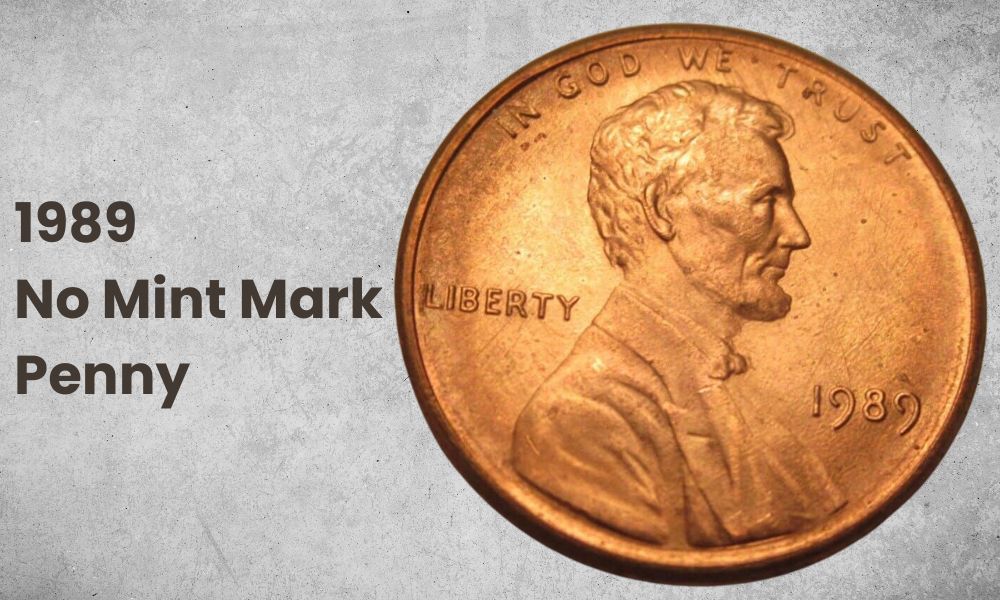
- Category: Lincoln cent/penny
- Denomination: 1 cent/$0.01
- Mintage: 7,261,535,000
- Minted at: Philadelphia
- Mint mark: No mint mark
- Strike type: Business
- Obverse Designer: Victor D. Brenner
- Reverse Designer: Frank Gasparro
- Metal Composition: 5% Zinc with 2.5% Copper after 1982
- Diameter: 19 mm
- Mass / Weight: 5 grams
- Edge: Plain/smooth
- Coinage years:1959-2008
1989 no mint mark penny features the bust of Abraham Lincoln, whom the coin category is named after.
The obverse is designed by Victor Brenner, whose likeness is said to replicate a plaque made in 1907. His initials can be seen on the edge of Lincoln’s shoulder.
The front side also features the motto “In God We Trust.” The word “Liberty” is on the left and while the year “1989” is on the right.
The reverse, meanwhile, features the Lincoln Memorial Building design created by Frank Gasparro. His initials can be found at the edge of the image.
The back side also features “United States of America” on the top part and the motto “E Pluribus Unum” underneath it.
The coin’s designation, “One Cent,” is located at the lower arc of the coin.
A 1989 no-mint mark penny in MS 68 RD condition was auctioned off for $312, though its value has since scaled higher to $4,112.50.
1989 D Penny
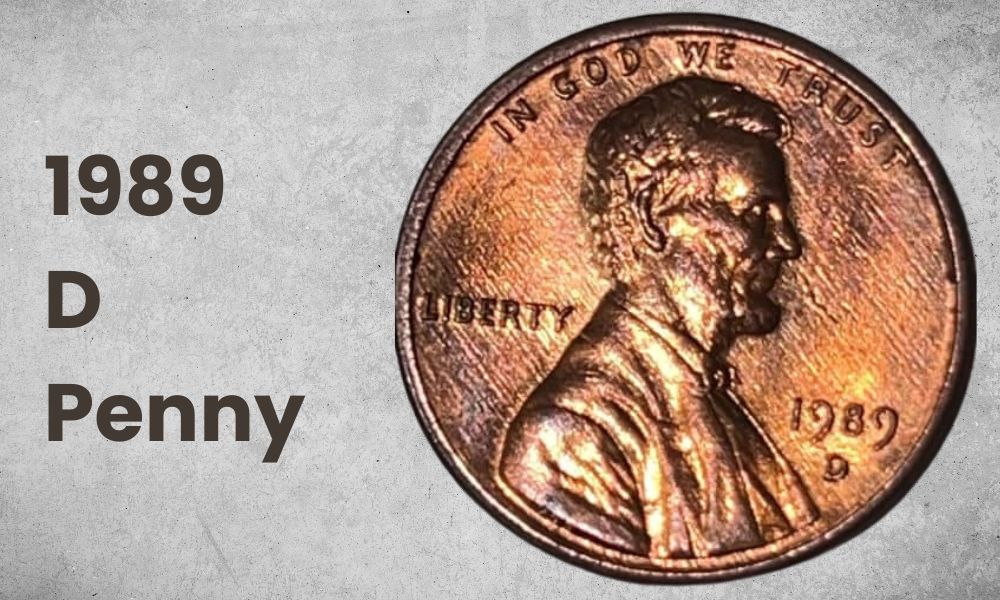
- Category: Lincoln cent/penny
- Denomination: 1 cent/$0.01
- Mintage: 5,345,467,111
- Minted at: Denver
- Mint mark:D
- Strike type: Business
- Obverse Designer: Victor D. Brenner
- Reverse Designer: Frank Gasparro
- Metal Composition: 5% Zinc with 2.5% Copper after 1982
- Diameter: 19 mm
- Mass / Weight: 5 grams
- Edge: Plain/smooth
- Coinage years:1959-2008
The 1989 D penny isn’t as rare as most collectors hope, given that 5.3 billion pieces were minted in 1989. That being said, they could still sell for a reasonable price.
In 2018, an MS 68 penny was sold for $260. Those with lower grades (MS 66 or MS 67) are sure to sell for less, but they’re still more than their face value.
Although these prices may be disappointing for some, it’s always a matter of finding the right coin (and buyer.) In 2020, an MS 69 penny was sold for a pretty $1,023.60.
1989 S Penny
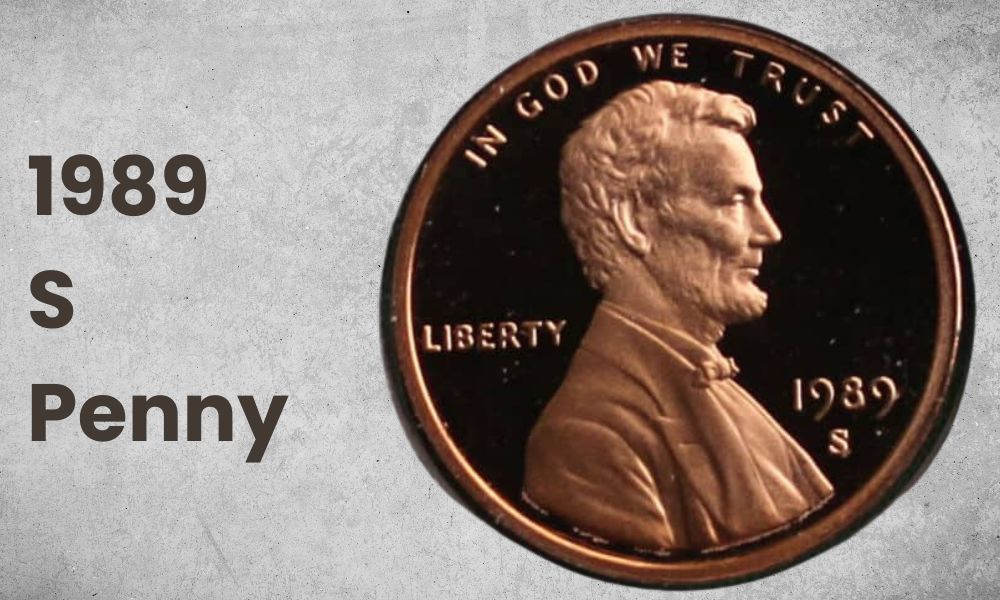
- Category: Lincoln cent/penny
- Denomination: 1 cent/$0.01
- Mintage: 3,220,194
- Minted at: San Francisco
- Mint mark:S
- Obverse Designer: Victor D. Brenner
- Reverse Designer: Frank Gasparro
- Metal Composition: 5% Zinc with 2.5% Copper after 1982
- Diameter: 19 mm
- Mass / Weight: 5 grams
- Edge: Plain/smooth
- Coinage years:1959-2008
The 1989 S penny is a proof coin, just like the many other currencies minted in San Francisco. This means the planchet used for such denominations has been burnished. Meanwhile, the dies have been treated with a particular chemical. Such coins maintain a mirror-like finish and a deeper haze/frost.
1989 S proof pennies are graded according to their shininess (Deep Cameo or Ultra Cameo.) Needless to say, the shinier they are, the higher their value.
A PR 70 1989 penny has sold for $37, though prices may go up to $300 with the right buyer.
Also Read: Top 20 Most Valuable Old Pennies Worth Money (Penny Collection)
1989 Penny History
The 1989 penny is categorized under the Lincoln cent/penny, which was first minted in the year 1909. This was done so to commemorate the 100th birth anniversary of President Abraham Lincoln.
Lincoln was the first president to appear on the coin, a century or so after George Washington dismissed the practice. In a funny twist of fate, Washington would appear on the quarter and the $1 coin.
Design
In 1959, the obverse side featured Lincoln’s portrait, while the reverse showcased two wheat stalks. Both were created by Victor Brenner, whose initials were only imprinted on the coin by the year 1918.
In 1959, the reverse design was changed to feature the creation of Frank Gasparro. His was a depiction of the Lincoln Memorial Building, which, ironically, he’s never visited.
Many believe it was a great design, although most believe the opposite. Regardless, Gasparro’s design stuck until it was replaced a few decades later.
Composition
The 1989 pennies, as those made after 1982, are made with 97.5% zinc and 2.5% copper. These make for its reddish appearance, which is graded accordingly by experts.
Expectedly, reddish coins are graded RB, while those with a combined color of red and brown are RB. Circulated coins are often found in Brown, hence the designation BR.
The 1989 penny weighs only 2.5 grams, while its diameter remains 19.05 mm. Coins struck on wrong planchets are known to weigh higher, such as the erroneous currency imprinted on a copper planchet (3.11 grams.)
1989 Penny Grading
For the most part, 1989 pennies are worth their face value: $0.01. But, depending on the color, state, and/or error, you may get a pretty penny for it. For one, an RD MS 68 no-mint mark penny has been auctioned off for an impressive $4,112.50.
Lists of 1989 Penny Errors
Noticeable errors, more often than not, mean a higher value. As to how much, know that it all depends on the mistake.
Here’s a list of the more common ones:
1. 1989 Penny Off-Center Error
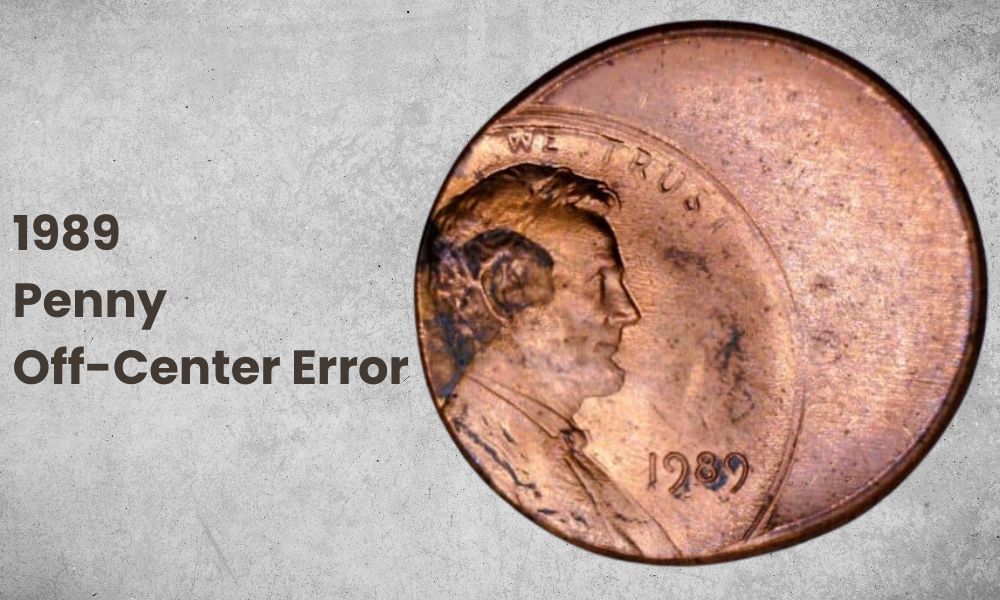
An off-center error is a common mistake you’ll see on 1989 pennies – and other denominations as well. This results in a center that is leaned more to the side (or top – or bottom.) As such, most of the images/words/numbers end up missing.
The cause behind this error is a blank that lands on the collar inappropriately.
The higher the off-center percentage is, the more valuable the coin. That said, experts believe that a rate of 50% to 60% will yield the most bids.
2. 1989 Penny Fold Over Strike Error
On a ‘normal’ coin, the planchet lies flat inside the machine. This ensures that the design comes out impeccably.
However, there are times when the planchet is positioned mistakenly. The result is a coin that is folded/bent after the first strike and flattened the next.
Pennies with this error have sold for $960 to $1,233.75 in the market.
3. 1989 Penny Struck on the Wrong Planchet Error
Many pennies have been struck on the wrong planchet. Some have been minted on dime planchets, while some have been struck on nickel planchets.
One of the more popular striking errors is one that has been stamped on a copper planchet. 1989 pennies are supposed to be made with 97.5% zinc coated with 2.5% copper.
However, one planchet slipped onto the machine, and the die printed on it.
The higher copper content of the said planchet meant this coin weighed heavier (3.11 grams) than the usual 2.5 grams.)
As this is a one-of-a-kind mistake, an MS 65 penny with this error sold for an impressive $7,500 in 2018.
Note: the video link above shows this coin error as well!
4. 1989 Penny Double Denomination Error
When a coin is struck on the wrong planchet, some of the features may end up missing. But in this case, a 1989 penny has already run through the mint. The result: two coin designs appear on its surface.
Being a rare error, this erroneous coin with an MS 66 grade was sold for $998.
5. 1989 Penny Double Struck With Indent Error
During minting, the planchet forces blank into the hopper, which then feeds coins into the mint. Sometimes, the die may arrive even before the last coin has been expunged. The result is an overlapping coin, which can sell for as much as $145 on the market.
6. 1989 Penny Cud Die Break Error
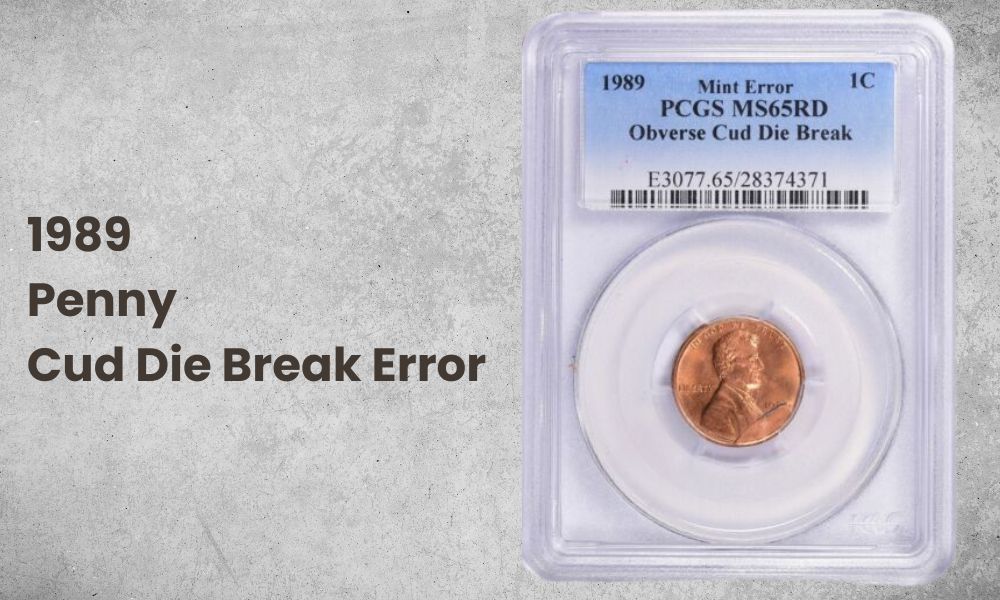
An old die will break after prolonged use. Unfortunately, such a crack may appear on the coin.
This error, known to fans as a cud die break, may arise as a slash or a thin line on the surface.
In some cases, the coin may appear scraped.
Sadly, this error doesn’t cost as much as the others above. However, you can fetch about $90 for a cud die break coin in MS 67 condition.
7. 1989 Penny Clipping Error
A clipping error forms when the punch overlaps a punched hole in the coin strip. The latter cannot advance properly, so the coin bears a missing concave area.
A 1989 penny with a double clip error sold for only $30 on eBay.
8. 1989 Penny Die Clash Error
A coin is formed when the obverse or reverse die strikes the surface. In some cases, the two dies collide, so their designs leave a partial imprint on one another.
While a die clash error is interesting, it doesn’t sell much in a market. Figures show that a 1989 penny with this mistake can only sell for a measly $20.
9. 1989 Penny Double Die Error
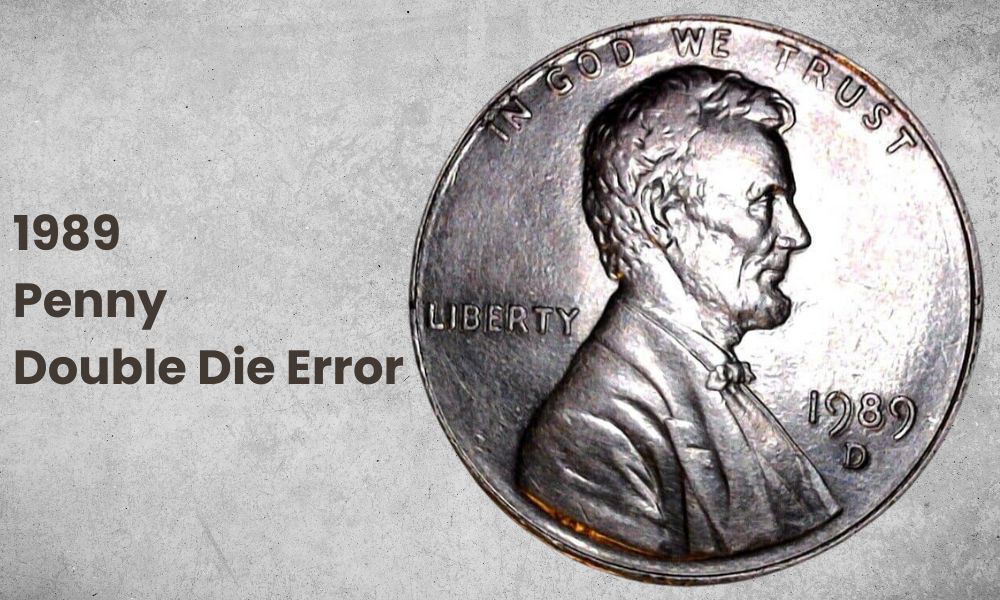
A double die error happens when the die changes position between strikes. The result is a coin with a doubled, tripled, or even quadrupled design.
Double-die errors can affect either the obverse or reverse side. As they are not as rare as the mistakes below, such coins may only sell for $10 to $15.
1989 Penny FAQs
What makes a 1989 penny rare?
Although 1989 pennies are not exactly scarce – more than 12.6 billion of them were produced – some denominations are considered rare.
One good example is a penny struck on a copper planchet. It weighs heavier at 3.11 grams compared to the typical 2.5 grams. A penny with this error has sold for $7,500 in the market.
Is the 1989 penny worth anything?
Yes, of course! Though circulated coins are only worth their face value, proof coins are valued at $10 a pop.
Likewise, a rare error – such as a 1989 penny stuck on a copper planchet – has sold for a whopping $7,500.
How much is a 1989 D penny worth?
A 1989 D penny is worth $0.01 in good or fine condition. Extremely fine pennies are worth $0.02, while uncirculated ones are valued at $0.34.
A 1989 D penny with a grade of MS 69 has been sold for $1,023.60.
How much is a 1989 error penny worth?
This depends on the error:
- Double die error – $10 to $15
- Die clash error – $20
- Penny clipping error – $30
- Cud die break – $90
- Double strike – $145
- Double denomination error – $998
- Fold over strike – $960 to $1,233.75
- Struck on the wrong planchet – $7,500
